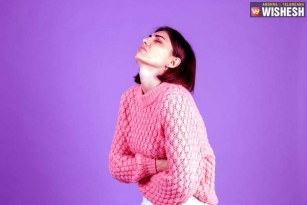
In the name of living today's Woman ka life, we have altered a lot from our way of living to the way we look... all those traditional Namaskaras, even if married, putting on Sindoor, Bindi and wearing a mangalsutra, is 'out of fashion' for us... we just believe in ourselves and nothing else... but for a change, let us view the point from the other side... let us know what Indian tradition has to say about various basic identities of our tradition that are followed;
Namaskar: Namaskar or Namaste is the most popular form of greeting in India. Folding the hands politely is a general salutation for welcoming someone or bidding farewell. While doing this, both the palms are placed together and raised to below the face. It is believed that both the hands symbolise one mind or the self meeting the self.
Tilak: Tilak is the the ritual mark on the forehead. It can be put in many forms as a sign of blessing, greeting or auspicious. This is usually made out of a red vermilion paste (kumkum) which is a mixture of turmeric, alum, iodine, camphor, etc. It can also be made of sandalwood paste (chandan) blended with musk. It is applied on the spot between the brows which is considered the seat of latent wisdom and mental concentration and is very important for worship. This also indicates the point at which the (third) spiritual eye opens. All thoughts and actions are supposed to be governed by this spot. Putting of the third eye symbolises the quest for the 'opening' of the third eye. All rites and ceremonies of the Hindus begin with a tilak topped wit a few grains of rice placed with the index finger or the thumb.
Aarti: It is performed as an act of veneration and love. It is often performed as a mark of worship and to seek blessings from God, to welcome the guests, for children on their birthdays, family members on auspicious occasions or to welcome a newly wed couple.
For performing Aarati, five small lamps called niranjans are filled with ghee or oil, and arranged in a small metal tray. A wick is made out of cotton wool and placed in the lamps. A conch-shell filled with water, auspicious leaves or flowers, incense or lighted camphor are also placed in the tray. The lamps are lit and the tray is rotated in a circular motion in front of the deity of the person to be welcomed. The purpose is to ward off evil effects and malefic influence of the 'evil eye'!
Bindi: A bindi is an auspicious mark worn by young girls and women. It is derived from Bindu a sanskrit word for dot. It is usually a red dot made with vermillion powder which is worn by women between their eyebrows on the forehead.
Considered a symbol of Goddess Parvati, it signifies female energy and is believed to protect women and their husbands. Traditionally a symbol of marriage, it has also become decorative and is worn today by girls and women as well. No longer it is restricted in colour and shape, bindis are seen in many bright colours and different shapes and designs embellished with coloured glass or glitter.
Mangalsutra: This is a necklace made of black beads and a golden pendant, worn ONLY by the married women as a mark of being married. It is the Indian equivalent of the western wedding ring. The mangalsutra is tied by her groom around her neck. These are supposed to protect against evil and the life of their husband.
Though to follow or not to follow these traditions or any values for that matter is totally dependent on each one of us, these are just not waste of time, but have a lot of value, when you give the same to them…
















